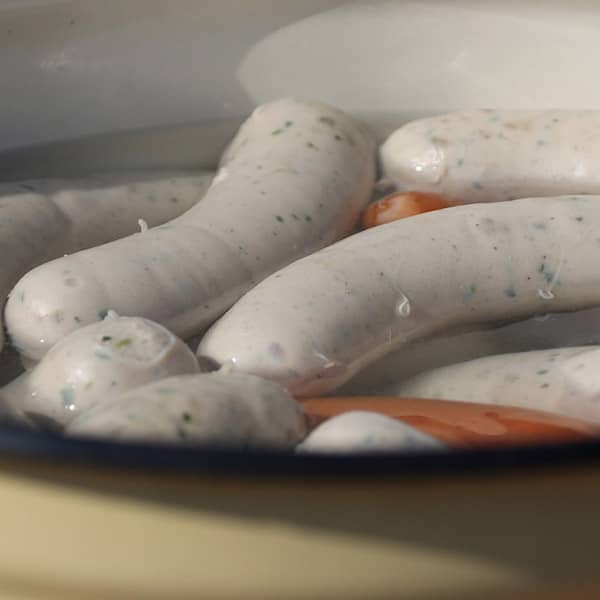From Raw To Rustic: Tenderizing Rostbrätel
Have you ever been captivated by the allure of a juicy, well-prepared piece of meat? The Rostbrätel, a creation of fine Thuringian taste, is among the culinary secrets that ignite the appetite and curiosity of meat lovers and amateur chefs alike. In this guide, we take you on a journey through the art of tenderizing Rostbrätel, a process often overlooked but essential for preparing the perfect Rostbrätel.
https://pixabay.com/photos/meat-hammer-meat-tenderizer-2238538/
Why Is Tenderizing Rostbrätel So Important?
When you think of preparing a Rostbrätel, tenderizing the meat might not be the first step that comes to mind. However, tenderizing plays a crucial role with several important functions that extend beyond simply flattening the meat.
First and foremost, tenderizing serves to make the meat tender. During the process, the firm, muscular tissue of the meat is broken down by the physical pressure. This reduces the connective tissue structure which can make meat tough. By tenderizing the meat, you break these structures, making the meat tender and easier to chew. For a delicate Rostbrätel, this is an invaluable advantage.
Additionally, tenderizing helps achieve a uniform thickness of the meat. By flattening the meat, you ensure that all parts cook evenly, avoiding undercooked or overcooked portions. This is especially important when grilling or frying, where different thicknesses can lead to uneven cooking.
Another benefit of tenderizing is the better absorption of spices and marinades. By tenderizing the Rostbrätel, you create small cracks and crevices in the meat that act like little pockets to hold liquids. These serve as channels for the marinade to penetrate deeper into the meat, resulting in an intensified and more even flavor.
Tenderizing therefore serves not only to shape the meat but also as a complex technique that enhances flavor, improves texture, and ensures even cooking. Though it may require some extra time and effort, the results in the form of a juicy, tender, and flavorful Rostbrätel are well worth it.
The Right Way To Tenderize Rostbrätel
Tenderizing Rostbrätel may seem simple at first glance. However, it requires some knowledge and skill to avoid damaging the meat and to achieve optimal results. Here’s a detailed look at the proper way to tenderize Rostbrätel.
First, you need the right tool, and this is where the meat tenderizer comes in. It consists of a handle and a heavy end used to hit the meat. There are various types of meat tenderizers, but the most common ones have a flat side and a ridged side. The tenderizer should be heavy enough to effectively work on the meat without tearing it.
Before you start the actual tenderizing of Rostbrätel, prepare the meat. Wash the Rostbrätel and pat it dry. Then place it on a cutting board or another sturdy surface. It’s advisable to place the Rostbrätel between two layers of cling film to prevent meat juice from splattering and to facilitate even tenderizing.
Start with the ridged side of the meat tenderizer to break down the meat’s tissue. Hit the entire meat piece evenly to ensure you work on all areas. Be careful not to hit too hard, as this could tear the meat. A steady, moderate pressure is ideal.
Once you have worked on the meat with the ridged side, switch to the flat side of the tenderizer. Here, the goal is to bring the meat to the desired thickness. Tenderize again evenly, making sure the meat doesn’t become too thin. The aim is to achieve a uniform thickness across the entire piece of meat.
The right way to tenderize Rostbrätel requires patience and care. It’s not about destroying the meat but preparing it to be tender and enhancing its ability to absorb flavors. Once you master this technique, you’ll be able to prepare a Rostbrätel that not only looks great but also tastes exceptional.
Tenderizing Rostbrätel: Tips And Tricks
-
Use Cling Film:
Place the Rostbrätel between two layers of cling film before you start tenderizing. This not only prevents potential contamination of your kitchen but also makes tenderizing easier and ensures a more even shape. -
Different Sides Of The Tenderizer:
Meat tenderizers often have two sides – a flat one and one with "teeth". Start the process with the ridged side of the tenderizer to loosen the meat's tough tissue and promote its tenderness. Then use the flat side to adjust the meat’s thickness. -
Temperature:
Let the meat come to room temperature before tenderizing. Cold meat can be stiffer and harder to tenderize. -
Seasoning:
Remember to season the Rostbrätel before and after tenderizing. This ensures that the seasonings penetrate deep into the meat, creating a more robust flavor.
Conclusion: The Importance Of Tenderizing For The Perfect Rostbrätel
Tenderizing Rostbrätel may not initially seem particularly challenging, but it encompasses a wealth of techniques and tips to master. Whether you are a meat connoisseur, an amateur chef, or simply a fan of Thuringian cuisine – the art of tenderizing is key to unlocking the full potential of a Rostbrätel. So, take the meat tenderizer in hand, energize your senses with the anticipation of a glorious meal, and make your first strike.





Leave a comment
This site is protected by hCaptcha and the hCaptcha Privacy Policy and Terms of Service apply.